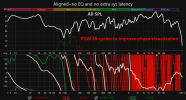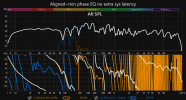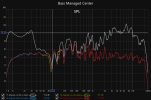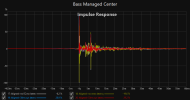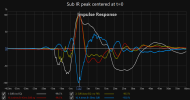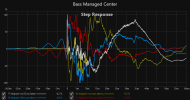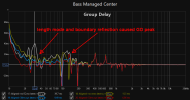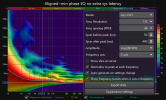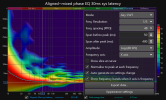I am excited to share my next project here! 
After converting my MCLAs to a sub I have decided to look for a more traditional approach to subs - hence the below project came to my mind
I have designed and built several dual opposed subwoofers (DOS) already - I can say I really love this design
This time I am going to use two Lavoce SSF153.00 (4 ohm version) 15" drivers - they shall arrive early next week
I will put them in a sealed cabinet using 18mm MDF with a size of 630 x 450 x 400 mm

I will use a Sabaj A30A full digital amp to drive them with an approx. max power of 450W which will yield 105dB SPL at 1 meter at 24Hz

At around 70% of the xmax of this driver:
(so I expect low distortion)

Group delay:

I am planning to cross the sub at 80Hz with my main system in the living room
The sub will be placed in the front in-between the Ikea Besta storage units (they actually hold all my gear including the PC and the audio stuff)
Build will start this week or latest next week, stay tuned!
After converting my MCLAs to a sub I have decided to look for a more traditional approach to subs - hence the below project came to my mind
I have designed and built several dual opposed subwoofers (DOS) already - I can say I really love this design
This time I am going to use two Lavoce SSF153.00 (4 ohm version) 15" drivers - they shall arrive early next week
I will put them in a sealed cabinet using 18mm MDF with a size of 630 x 450 x 400 mm
I will use a Sabaj A30A full digital amp to drive them with an approx. max power of 450W which will yield 105dB SPL at 1 meter at 24Hz
At around 70% of the xmax of this driver:
(so I expect low distortion)
Group delay:
I am planning to cross the sub at 80Hz with my main system in the living room
The sub will be placed in the front in-between the Ikea Besta storage units (they actually hold all my gear including the PC and the audio stuff)
Build will start this week or latest next week, stay tuned!



